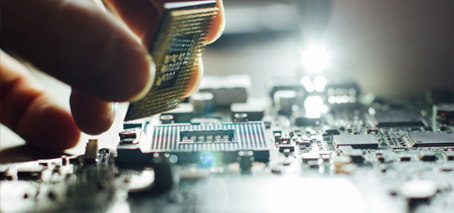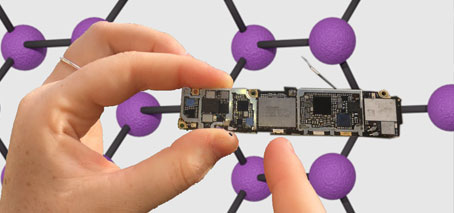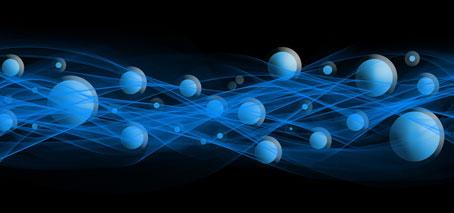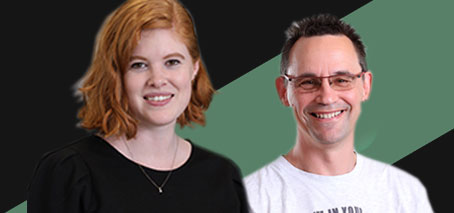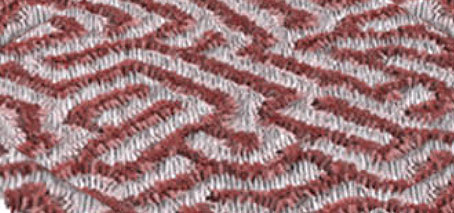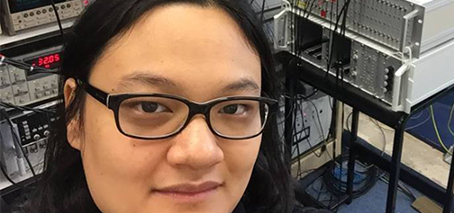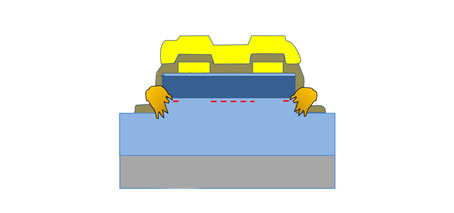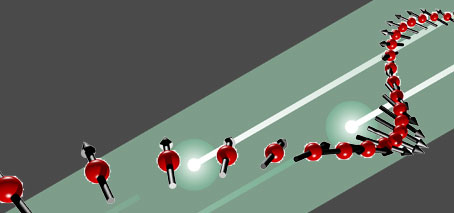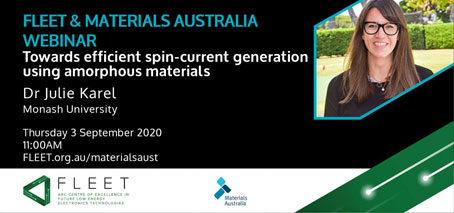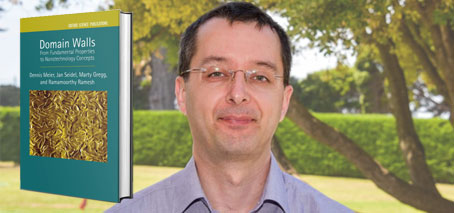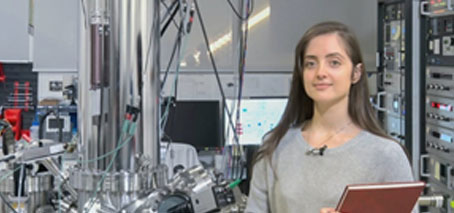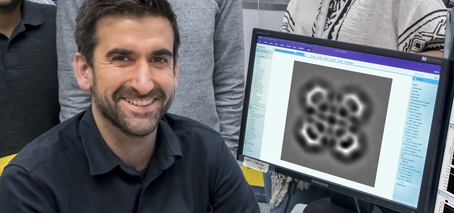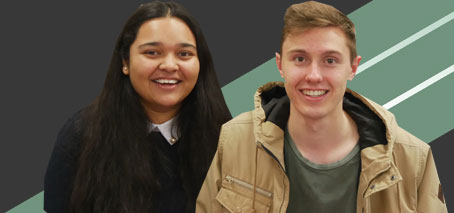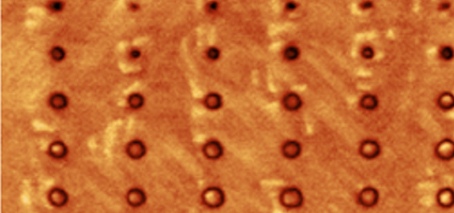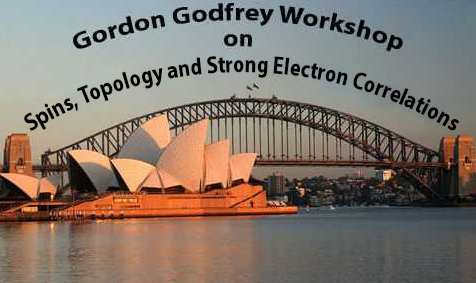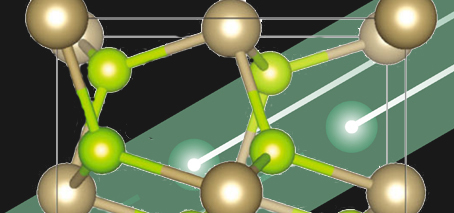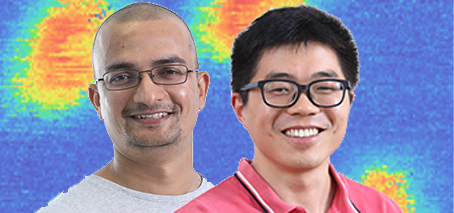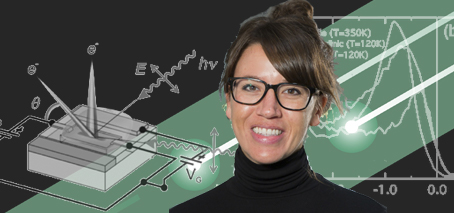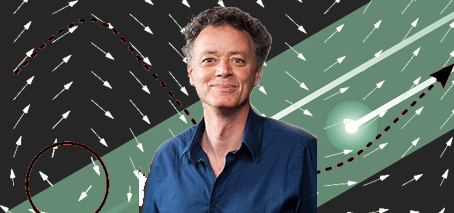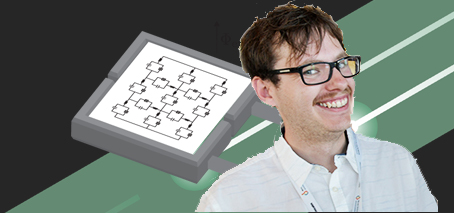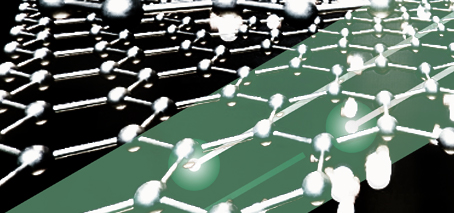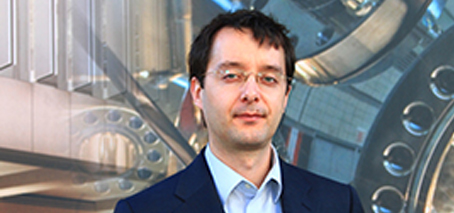Two patent applications, one filed in 2020, reinforce FLEET’s position as a world leader in topological transistors. The patents cover work in the ‘switching’ of topological material, to facilitate creation of a functioning topological transistor – a proposed new generation of ultra-low energy electronic devices. Their world-first success was the switching of a material via application of an electric-field between …
Topological materials beat Boltzmann’s tyranny: Surpassing lower limit on computing energy consumption
Topological insulators can reduce transistor switching energy by a factor of four Defeating Boltzman’s tyranny, which puts a lower limit on operating voltage New FLEET research confirms the potential for topological materials to substantially reduce the energy consumed by computing. The collaboration of FLEET researchers from University of Wollongong, Monash University and UNSW have shown in a theoretical study that …
Qubits comprised of holes could be the trick to build faster, larger quantum computers
New study indicates holes the solution to operational speed/coherence trade-off, potential scaling up of qubits to a mini-quantum computer. Quantum computers are predicted to be much more powerful and functional than today’s ‘classical’ computers. One way to make a quantum bit is to use the ‘spin’ of an electron, which can point either up or down. To make quantum computers …
One-dimensional quantum nanowires fertile ground for Majorana zero modes
Important step towards fault-tolerant quantum computing Why is studying spin properties of one-dimensional quantum nanowires important? Quantum nanowires–which have length but no width or height–provide a unique environment for the formation and detection of a quasiparticle known as a Majorana zero mode. A new UNSW-led study overcomes previous difficulty detecting the Majorana zero mode, and produces a significant improvement in …
Seeking answers in ferroelectric patterning
Why do some ferroelectric materials display bubble-shaped patterning, while others display complex, labyrinthine patterns? A FLEET study finds the answer to the changing patterns in ferroelectric films lies in non-equilibrium dynamics, with topological defects driving subsequent evolution. Ferroelectric materials can be considered an electrical analogy to ferromagnetic materials, with their permanent electric polarisation resembling the north and south poles of …
Electrical spin filtering the key to ultra-fast, energy-efficient spintronics
Spin-filtering could be the key to faster, more energy-efficient switching in future spintronic technology, allowing the detection of spin by electrical rather than magnetic means. A paper published last month by researchers at UNSW and international collaborators demonstrates spin detection using a spin filter to separate spin orientation according to their energies. Ultra-fast, ultra-low energy ‘spintronic’ devices are an exciting, …
Making better quantum devices
Removing random doping allows for reproducible manufacture of quantum devices A UNSW-led collaboration has found that removing random doping in quantum electronic devices dramatically improves their reproducibility – a key requirement for future applications such as quantum-information processing and spintronics. The quantum reproducibility challenge The challenge with making quantum devices is that, until now, it has not been possible to …
Reviewing multiferroics for future, low-energy data storage
Multiferroic BFO’s unique magnetic and electrical properties offer possible ultra-low energy data storage A new UNSW study comprehensively reviews the magnetic structure of the multiferroic material bismuth ferrite (BiFeO3 – BFO). The review advances FLEET’s search for low-energy electronics, bringing together current knowledge on the magnetic order in BFO films, and giving researchers a solid platform to further develop this …
Julie Karel describing search for future memory, for Materials Australia
An online audience of almost 90 tuned in this week to hear FLEET CI Dr Julie Karel describing her search for non-volatile memory technologies and associated materials challenges. The talk was co-hosted by FLEET and Materials Australia. Catch up on the talk here Julie described her own work at Monash Department of Material Science and Engineering developing materials that can …
Jan Seidel co-edits first book on emerging domain wall nanoelectronics
FLEET CI Prof Jan Seidel (UNSW) is co-editor on a new book titled “Domain Walls – From Fundamental Properties to Nanotechnology Concepts” published by Oxford University Press. It is the first to cover the emerging field of ferroelectric domain walls in depth, from underlying nanoscale material properties to prototype and emerging nanoelectronics technology and future research concepts in the area. …
Unexpectedly-fast conduction electrons in Na3Bi
—Written by Dr Iolanda di Bernardo, FLEET/Monash An Australian-led study uses a scanning-tunnelling microscope ‘trick’ to map electronic structure in Na3Bi, seeking an answer to that material’s extremely high electron mobility. In studying the topological Dirac semimetal, the team found that exchange and correlation effects are crucial to electron speed, and therefore mobility, and thus to the use of this …
Bingeing Netflix under lockdown? Here’s why streaming comes at a cost to the environment
Coronavirus lockdowns have led to a massive reduction in global emissions, but there’s one area where energy usage is up – way up – during the pandemic: internet traffic. Data-intensive video streaming, gaming and livestreaming for business, university and school classes, is chewing up energy. Read more: Netflix has capitalized on social isolation, but will its success continue in a post-coronavirus world? Estimates can be notoriously difficult and depend on the electricity …
International collaboration unlocks vdW heterostructure
2D vdW TMD heterostructures studied Study correlates interface physics to device performance An India-Australian theoretical and experimental study for high-performance optoelectronics has been published in Nano Letters. The Monash University collaboration with the Indian Institute of Technology Bombay (IITB) designed and fabricated a heterostructure comprising two layered transition metal dichalcogenides (WSe2 and ReS2). Integrating new physics in vdW heterostructures Van-der-Waals …
Putting artificial intelligence to work in the lab
Automated Scanning Probe Microscopy (SPM) controlled by artificial intelligence First demonstration of fully autonomous, long-term SPM operation An Australian-German collaboration has demonstrated fully-autonomous SPM operation, applying artificial intelligence and deep learning to remove the need for constant human supervision. The new system, dubbed DeepSPM, bridges the gap between nanoscience, automation and artificial intelligence (AI), and firmly establishes the use of …
Taste of research: UNSW
UNSW’s Taste of Research program provides undergraduate Physics students the opportunity to undertake a small research project with one of the research groups in the School. Cecilia Bloise asked students Seamus Lilley and Krittika Kumar who worked with FLEET PhD Yonatan Ashlea Alava, to describe the experience for our research blog… What are you working on Seamus? “I worked …
Designer-defect mediated clamping of ferroelectric domain walls for more-stable nanoelectronics
Improved polarisation retention in ferroelectric a significant step forward for domain-wall nanoelectronics in data storage Engineering defects in ferroelectrics provides key to improved polarisation stability Researchers achieved stability greater than one year (a 2000% improvement) A UNSW study published today in Nature Communications presents an exciting step towards domain-wall nanoelectronics: a novel form of future electronics based on nano-scale conduction …
Gordon Godfrey Workshop advances Australian quantum physics
Almost 120 researchers gathered in UNSW last week to discuss spin and strong-electron correlations in the university’s biennial Gordon Godfrey Workshop. The 2019 Gordon Godfrey Workshop on Spins and Strong Correlations was held at UNSW’s School of Physics for five days from 25 to 29 November. The Gordon Godfrey Workshops, which have been running since 1991, provide a forum for Australian and international researchers to exchange ideas and …
New spin directions in pyrite an encouraging sign for future spintronics
first theoretical demonstration of both in-plane and out-of-plane spin highly energy- and direction- dependent behaviour discovered interplay between surface and bulk states plays a critical role in surface spin texture A Monash University study revealing new spin textures in pyrite could unlock these materials’ potential in future spintronics devices. The study of pyrite-type materials provides new insights and opportunities for …
UNSW student focuses kilometre-long laser
UNSW PhD student focuses one-km long laser to probe electronic structure Measuring femto-second responses on X-ray Free Electron Laser (XFEL) One of the highest energies of any synchrotron in the world. “It’s a pretty surreal being at the pointy end of almost a kilometre-long laser,” says UNSW PhD student Oliver Paull. “Not because of any danger from the laser (even …
Recognition of hard work, PhD submitted – congratulations Stuart Burns, UNSW
Congratulations to FLEET PhD student Stuart Burns, who submitted his PhD thesis recently, and whose hard work was rewarded by a rare UNSW scholarship to continue to carry out research while his thesis is being reviewed. Stuart is a PhD candidate working with Prof Nagy Valanoor and Dr Daniel Sando at UNSW to study the functional behaviours of ferroelectrics at …
Women in FLEET Fellowships
FLEET’s goal is to achieve 30% representation of women at all levels across FLEET. To begin to move towards this goal, we needed innovative approaches that would allow us to begin ‘shifting the dial’. One innovative initiative that has met with success was FLEET’s new women-only Fellowships, offered in multiple locations, and across all fields of study in the Centre. …
First observation of native ferroelectric metal
In a paper released today in Science Advances, UNSW researchers describe the first observation of a native ferroelectric metal. The study represents the first example of a native metal with bistable and electrically switchable spontaneous polarization states – the hallmark of ferroelectricity. “We found coexistence of native metallicity and ferroelectricity in bulk crystalline tungsten ditelluride (WTe2) at room temperature,” explains …
Using disorder to build new materials for low-energy electronics: welcome new FLEET AI Julie Karel
Dr Julie Karel conducts research at the intersection of materials science and condensed matter physics to develop new materials for emerging low-energy nanoelectronic and magnetoelectronic devices. Originally from the US, Julie developed new thermal interface materials to improve mobile-device performance at Intel, and was a postdoctoral researcher at the Max Planck Institute in Germany. In materials design, Julie uses complete …
Deciphering the fundamental physics of ferroelectricity at the nanoscale
Welcome new AI Laurent Bellaiche Welcome to Prof Laurent Bellaiche, whose ongoing research collaborations with FLEET are recognised by him becoming a Centre Scientific Associate Investigator. At the University of Arkansas (US), Prof Bellaiche leads first-principles-based theoretical studies of ferroelectrics, magnetic compounds, multiferroics and other semiconductors. He has co-authored over 310 refereed journal articles, his publications have been cited more …
New Josephson junction study links quantum theory to experiment
The Josephson junction is one of the most important elements in turning quantum phenomena into usable technology. A new RMIT study establishes a theoretical framework for new optical experimentation on these key devices, with implications for future fundamental quantum research and applications such as quantum computing. Josephson junction studies Josephson junctions can be formed by two superconducting plates, separated by …
Topological physics finds Famelab success
Congratulations to FLEET’s Sam Bladwell (right, UNSW), who won the NSW semifinal of Famelab, talking about study of electron spin, and will now compete in the finals in Perth on May 8th. Topological physics has done particularly well in this year’s Famelab, with FLEET associates Dr Semonti Bhattacharyya and Dr Antonija Grubisic-Cabo (Monash University) also qualifying for the Victorian semifinals. …
I can’t believe it’s not graphene: nanoengineering artificial graphene
New facility improves study of ‘artificial graphene’ at FLEET ‘Like driving a new Maserati!’ The amazing electrical properties of graphene and other 2D, atomically-thin crystals are due to the symmetry of their lattice structure. For example, it is graphene’s famous ‘honeycomb’ lattice that causes electrons to act as they were massless – moving about 70 times faster than in silicon …
Topological defects could be key to future nano-electronics
• Ferroic and multiferroic topological structures offer exciting potential in future nanoelectronics • Commentary piece published this week in Nature Materials The connection from fridge magnets to cutting edge materials science is shorter than what one might expect. The reason why a magnet sticks to your fridge is that electronic spins or magnetic moments in the magnetic material spontaneously align …
Networking and skills development: Canberra Summer School
Recognising the increasing importance of topological physics, FLEET helped run the 2018 Canberra International Physics Summer School on Topological Matter at ANU – a great opportunity for early-career Australian physicists to hear from leading experts from around the world. Over 90 attendees discovered topological materials’ applications to photonics, ultra-cold systems and quantum computation. Nobel laureate Prof Duncan Haldane (Princeton University) …
Expanded partnership with Tsinghua University: meet FLEET’s two new Partner Investigators
FLEET’s fruitful relationship with Tsinghua University (Beijing) has been expanded, with the Centre welcoming two new Partner Investigators to lead research collaborations. Prof Shuyun Zhou studies the electronic structure of novel two-dimensional materials and heterostructures using advanced electron spectroscopic tools, including angle-resolved photoemission spectroscopy (ARPES), spin-resolved ARPES, nano-ARPES and ultrafast, time-resolved ARPES. She has made important progress on the electronic structure …

